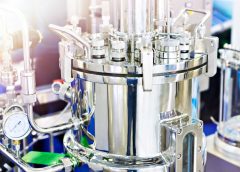Single-use bioreactors offer a modern approach to bioprocessing, streamlining operations in various applications. However, while they bring several advantages to the table, they also come with limitations. Read on to understand the benefits and drawbacks of single-use bioreactors so you can make a good decision for your laboratory.
Benefits of Single-Use Bioreactors
Single-use bioreactors simplify the production process in significant ways. They eliminate the need for the cleaning and sterilization of traditional stainless steel reactors, reducing downtime between batches and enhancing productivity.
Additionally, these bioreactors decrease the risk of cross contamination, offering a safer environment for the cultivation of sensitive cultures. Their design flexibility also allows for rapid setup and scalability, catering to both small-scale experiments and large-scale production needs. Such attributes underscore the growing preference for single-use bioprocess products over reusable ones in biotechnological and pharmaceutical applications.
Drawbacks of Single-Use Bioreactors
Despite their benefits, single-use bioreactors present several challenges. One of the primary concerns revolves around waste management. The disposable nature of these systems generates a significant amount of plastic waste, raising environmental sustainability issues.
Furthermore, the initial cost can be higher than traditional systems, particularly for small-scale operations where the economies of scale do not apply. There are also technical limitations, including the potential for leachables and extractables from the plastic components, which could affect cell growth and product integrity. These factors necessitate a careful evaluation when considering the adoption of single-use bioreactors.
How To Decide
Deciding to implement single-use bioreactors in your practice requires a nuanced understanding of how they align with your operational goals and values. Evaluating factors such as production scale, budget constraints, and environmental impact will guide this decision. Additionally, considering the type of cell cultures you work with and the specific requirements of your processes is vital. Keeping abreast of the latest developments and technologies in the field can also provide insights into innovative solutions that mitigate some of the drawbacks associated with single-use systems.
Understanding the benefits and drawbacks of single-use bioreactors is essential for professionals in the biotechnological field. These systems offer a compelling solution for many of the operational challenges of today, providing efficiency gains, reducing contamination risks, and enabling scalability. However, considerations around environmental impact, cost, and technical limitations must also guide the decision to employ these technologies. By carefully weighing these factors, individuals and organizations can make informed choices that align with their operational objectives and ethical considerations, maximizing the potential of single-use bioreactors in their practices.


